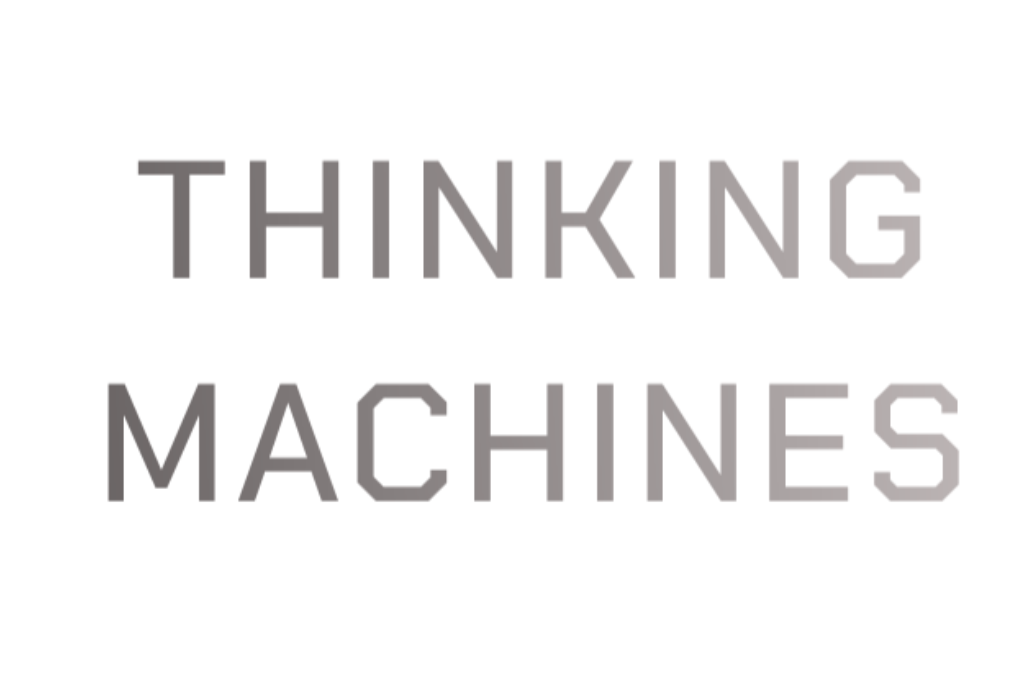AI Research
How Police AI Tools Can Improve Workflow, Benefit Customer Service

Real-time data-processing platforms that combine video analytics, license-plate readers, and social media scraping are significantly reducing investigative timelines. A 2024 multi-city technical analysis documented a 73% reduction in investigation time and improved cooperation across jurisdictions through the use of real-time data processing systems.
Yet speed means little if victims still feel adrift. Victim assistance applications that push automatic texts or e-mails at each milestone of their case, such as detective assignment, arrest, and case filing, can help victims stay informed. However, national research from 2013 shows that just 23 percent of victims enrolled in automated-notification systems. With proactive outreach and improved online registration, those numbers would hopefully improve.
Turning Data into Dialogue
AI can also change how departments tell their story. Real-time resource platforms can track patrol coverage, crime hotspots, and response metrics more quickly and efficiently. With analytics, police chiefs can shift the community and elected officials’ conversations to include evidence along with stories of police impact. For elected officials, the payoff is a clear justification for technology budgets. For residents, it is proof—updated daily—that their tax dollars translate into shorter waits and safer streets.
These gains go beyond efficiency; they reshape the service experience itself. Automated status updates keep victims informed without requiring them to chase case information. Predictive resource mapping positions units closer to likely call hot spots, trimming response times for entire neighborhoods. Chatbots on department websites answer common questions 24/7, guiding residents to online reporting or community resources without a single hold tone.
Rethinking Customer Service with AI
AI Research
Mira Murati’s Thinking Machines Lab Publishes First Research on Deterministic AI Models

Thinking Machines Lab, the AI research company founded by former OpenAI CTO Mira Murati, has released its first public research under a new blog series titled Connectionism. Backed by $2 billion in seed funding and a team of former OpenAI researchers, the lab is focused on solving fundamental challenges in AI.
The inaugural post, authored by Horace He, explores how randomness in large language model inference arises from GPU kernel orchestration. The research outlines techniques to create deterministic responses, a breakthrough with potential applications in enterprise reliability, scientific research, and reinforcement learning. The publication marks a rare glimpse into one of Silicon Valley’s most closely watched AI startups as it prepares its first product launch.
AI Research
When you call Donatos, you might be talking to AI

If you call Donatos Pizza to place an order, you might be speaking with artificial intelligence.
The Columbus-based pizza chain announced that it has completed a systemwide rollout of voice-ordering technology powered by Revmo AI. The company says the system is now live at all 174 Donatos locations and has already handled more than 301,000 calls since June.
Donatos Reports Higher Order Accuracy, More Efficient Operations
According to Donatos, the AI system has converted 71% of calls into orders, up from 58% before the rollout, and has achieved 99.9% order accuracy. The company also says the switch freed up nearly 5,000 hours of staff time in August alone, allowing employees to focus more on preparing food and serving in-store customers.
“Our focus was simple: deliver a better guest experience on the phone and increase order conversions,” Kevin King, President of Donatos Pizza, said in a statement.
Ben Smith, Donatos’ Director of Operations Development, said the change provided immediate relief on the phones, allowing staff to redirect time to order accuracy and hospitality.
Donatos said it plans to expand the system to handle more types of calls and to make greater use of its centralized answering center. The company did not say whether it plans to reduce call center staffing or rely more heavily on automation in the future.
Other chains report trouble with AI ordering systems
Taco Bell recently started re-evaluating its used of AI to take orders in the drive-thru after viral videos exposed its flaws. In one well-known video, a man crashed the system by ordering 18,000 cups of water. The company is now looking at how AI can help during busy times and when it’s appropriate for a human employee to step in and take the order.
Last year, McDonald’s ended its AI test in 100 restaurants after similar problems surfaced. In one case, AI added bacon to a customer’s ice cream. A McDonald’s executive told the BBC that artificial intelligence will still be part of the chain’s future.
AI Research
Why Ibex Stock Surged 41% to All-Time Highs Today (Hint: It’s Artificial Intelligence)

Key Points
-
Ibex reported record revenue for its fourth quarter and full year of 2025.
-
Ibex is expanding its AI tools and targeting new verticals.
-
The stock hit an all-time high on Sept. 12.
- 10 stocks we like better than Ibex ›
Ibex reported record revenue for its fourth quarter and full year of 2025.
Ibex is expanding its AI tools and targeting new verticals.
The stock hit an all-time high on Sept. 12.
Shares of little-known company Ibex (NASDAQ: IBEX) went parabolic today, shooting 41.1% higher in early-morning trading. The stock was still trading around 33% up at 1:15 p.m. ET Friday.
Ibex is a business process outsourcing company, providing a wide array of services such as customer and technical support, lead generation, surveys, and business intelligence and analytics.
Where to invest $1,000 right now? Our analyst team just revealed what they believe are the 10 best stocks to buy right now. Continue »
Turns out, Ibex’s efforts to build a digital business have already started to pay off, and that is drawing attention to the stock today. The keyword here is artificial intelligence (AI).
Image source: Getty Images.
AI-driven growth
Ibex reported numbers for its 2025 fourth quarter and fiscal year (ended June 30) after the Sept. 11 market close. Ibex’s Q4 revenue jumped 18% year over year to $147 million, driven by strong growth in its top three markets: retail and e-commerce; healthcare; and travel, transportation, and logistics.
The real deal, however, is what Ibex’s full earnings report looked like:
- Record fourth-quarter and full-year revenue
- Highest revenue growth in 11 quarters
- Fastest revenue growth in three years for the full year
- Record free cash flow
These are big milestones, but they’re not really why Ibex stock is going to the moon. It’s these words from CEO Bob Dechant: “Importantly, this quarter marked the shift from proof of concept for our AI solutions to full-scale deployments, setting the table for future growth.”
Ibex is “transforming into a digital-first business” by leveraging AI through its Wave iX platform, which uses generative AI to improve customer experiences. Earlier this month, Ibex said it is targeting the government sector now.
What’s next for Ibex stock?
The company’s capital expenditures more than doubled to $18.4 million in 2025, driven by capacity expansion. Ibex generated record free cash flow of $27.3 million in the year and repurchased nearly 3.9 million shares, almost 23% of its outstanding shares.
Following Ibex’s strong earnings report, analysts at RBC Capital were quick to raise their price target on the stock to $39 per share from $31 a share. Ibex stock already hit an all-time high of $42.99 per share today.
With Ibex projecting 7.5% revenue growth at the midpoint for FY 2026 and capital expenditure of $20 million to $25 million on further expansions, this is one stock you should have on your radar.
Should you invest $1,000 in Ibex right now?
Before you buy stock in Ibex, consider this:
The Motley Fool Stock Advisor analyst team just identified what they believe are the 10 best stocks for investors to buy now… and Ibex wasn’t one of them. The 10 stocks that made the cut could produce monster returns in the coming years.
Consider when Netflix made this list on December 17, 2004… if you invested $1,000 at the time of our recommendation, you’d have $649,037!* Or when Nvidia made this list on April 15, 2005… if you invested $1,000 at the time of our recommendation, you’d have $1,086,028!*
Now, it’s worth noting Stock Advisor’s total average return is 1,056% — a market-crushing outperformance compared to 188% for the S&P 500. Don’t miss out on the latest top 10 list, available when you join Stock Advisor.
*Stock Advisor returns as of September 8, 2025
Neha Chamaria has no position in any of the stocks mentioned. The Motley Fool has no position in any of the stocks mentioned. The Motley Fool has a disclosure policy.
The views and opinions expressed herein are the views and opinions of the author and do not necessarily reflect those of Nasdaq, Inc.
-

 Business2 weeks ago
Business2 weeks agoThe Guardian view on Trump and the Fed: independence is no substitute for accountability | Editorial
-
Tools & Platforms1 month ago
Building Trust in Military AI Starts with Opening the Black Box – War on the Rocks
-

 Ethics & Policy2 months ago
Ethics & Policy2 months agoSDAIA Supports Saudi Arabia’s Leadership in Shaping Global AI Ethics, Policy, and Research – وكالة الأنباء السعودية
-

 Events & Conferences4 months ago
Events & Conferences4 months agoJourney to 1000 models: Scaling Instagram’s recommendation system
-

 Jobs & Careers2 months ago
Jobs & Careers2 months agoMumbai-based Perplexity Alternative Has 60k+ Users Without Funding
-

 Podcasts & Talks2 months ago
Podcasts & Talks2 months agoHappy 4th of July! 🎆 Made with Veo 3 in Gemini
-

 Education2 months ago
Education2 months agoMacron says UK and France have duty to tackle illegal migration ‘with humanity, solidarity and firmness’ – UK politics live | Politics
-

 Education2 months ago
Education2 months agoVEX Robotics launches AI-powered classroom robotics system
-

 Funding & Business2 months ago
Funding & Business2 months agoKayak and Expedia race to build AI travel agents that turn social posts into itineraries
-

 Podcasts & Talks2 months ago
Podcasts & Talks2 months agoOpenAI 🤝 @teamganassi

